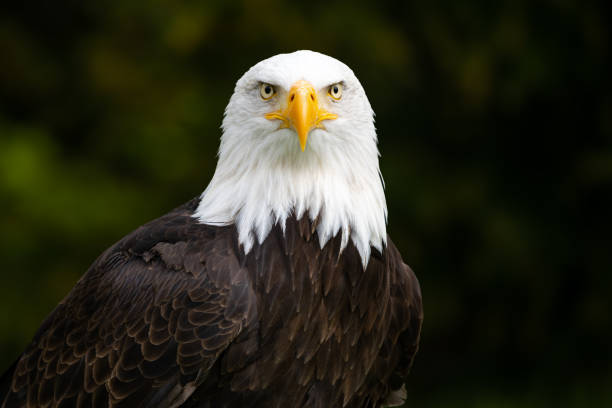The Georgia Department of Natural Resources has conducted its annual nest survey and found that the species that is our country’s national symbol continues to grow in numbers.
Survey leader Bob Sargent says he is pleased to see the bald eagle continue to bounce back from nearly going extinct decades ago.
“The findings were even better than last year’s good results,” Sargent said. “That’s most encouraging when you consider the beating that nesting coastal eagles took in 2022 because of an outbreak of highly pathogenic avian influenza.”
According to the survey, of the 145 nest territories recorded, 116 were successful, and researchers found 178 fledgling, or baby, eagles.
This year’s sample was limited to a smaller area than statewide surveys done every five years and was focused mainly in northwestern Georgia, as well as coastal areas of the state.
Sargent reported that dead eaglets were found in two nests, but at least one of those was clearly the result of predation and not disease.
“That’s not unusual, great horned owls, raccoons and a few other predators kill eaglets,” Sargent said.
The report also states that the 82% nest success rate recorded this year was up from 73% last year, with an average of 1.5 young found fledged per nest, meaning that despite being fewer in number than other states, Georgia’s success rate is above the national average.
According to the U.S. Fish and Wildlife Service, there was an estimated population of 100,000 eagles when the bird was made the national symbol in 1792. However, by the mid 1970s, their numbers had declined to the point where the birds were facing extinction nationwide. In that same time period, zero bald eagle nests were found in Georgia and the species was not seen again in the state until 1981 when one solitary nest was recorded.
Deforestation and habitat loss certainly played a role in the population plunge, but overhunting also took a massive toll.
Coastal eagles generally live on a diet of fish, but the inland birds prey on chickens, lambs and other small domestic livestock, which made them Public Enemy Number One in the eyes of farmers and ranchers.

The federal government actually first moved to prevent the bird’s extinction in 1940. That year, Congress passed the Bald Eagle Protection Act, which prohibited killing, selling or possessing the species.
Despite those efforts, the population took another nose dive beginning in the early 1950s, but this time it was due the unintentional acts of humans.
The chemical DDT was created to control mosquitos and other insects; however, scientists did not realize that the chemical was extremely dangerous to humans and it was an absolute eagle killer.
According to the Fish and Wildlife Service, it was discovered that the chemical made its way into the waterways where it was consumed by fish. When the eagles ate the contaminated fish, the chemical made it into the bird’s reproductive systems.
Scientists discovered that DDT caused the eggs to have extremely thin shells that could not properly incubate the embryo inside. In 1972, the government banned the use of DDT because of its harmful effects and the numbers of bald eagles began a slow march to recovery.
Bald eagles are no longer listed as endangered and are now considered only “threatened;” however, it remains a crime to kill a bald eagle or disturb an eagle’s nest in any way.
Scott Hudson is the Senior Investigative Reporter and Editorial Page Editor for The Augusta Press. Reach him at scott@theaugustapress.com











